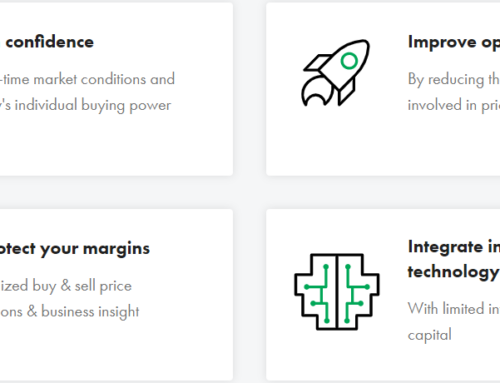This is one of the questions I get asked the most frequently. It’s very simple, yet incredibly important.
If you can attract A-list investors to your venture, you may be on your way to building the next unicorn. If you can’t, then you may be at risk of hitting a wall.
Why do I get asked this question so often?
I’ve founded four companies, starting in 1999 with a SaaS logistics company called 3Plex. Since then, I’ve invested in several companies via Cambridge Capital, a private equity firm focused on logistics, supply chain, and technology. And I’ve advised many others, through BG Strategic Advisors, an investment bank for dozens of major companies in the supply chain sector. As a result, I’ve been able to see this issue from multiple perspectives.
As an investor, here are the seven questions I ask:
- Are you solving a big problem?
- Do you have a unique solution?
- Can you show referenceable and repeatable customers?
- Do you have a clear growth strategy?
- What makes you the right leader?
- Will you make money?
- Is this a deal that makes sense?
These questions can be modified depending on whether you are raising growth capital or pursuing a buyout. Let’s look at each topic in order.
1. Are You Addressing a Large Market?
All companies exist to solve a problem. The key question: is your problem big enough to enable you to build a large company?
At the beginning of my career, I was a generalist at a strategy consulting firm called CDI (now part of Oliver Wyman). Our firm evaluated a technology company that could shorten the time it took to help a fish grow to maturity. In principle, this was groundbreaking science. Unfortunately, it proved to be bad business, because they had chosen a type of fish, salmon, whose market price would always be less than its marginal cost. If only they had chosen sturgeon.
In 2015, I invested in a supply chain technology company called Grand Junction. One reason I liked the company was that they were focused on the $10 billion market for last-mile logistics. Every retailer in the world needs a last-mile solution to compete against Amazon. And indeed, in the end, Target acquired the company to gain that very capability.
You can demonstrate a big problem by documenting the market size. You should also showcase a potential customer that is struggling with that issue today, as a “use case” that validates the problem. How do they do it? What is broken? How will you improve it?
2. Do you have a unique solution?
This brings us to the second topic. How will you meet this market need? Maybe you have a unique technology. Or maybe you are building a unique business model. Either can be successful. A winning company must have a succinct answer to this question. What makes your business unique?
In 2009, we looked at the electronics recycling market. We noticed that e-waste was the fastest-growing stream in the municipal waste category. And we recognized that millions of consumers wondered how to recycle, remarket, or otherwise discard their cell phones and electronic devices. We saw multiple companies offering to buy those devices. But we did not see anyone with a fully-functioning marketplace.
The unique solution we envisioned was to be the first to build that marketplace. Thus, EcoSquid was born. A few months later, it was a Finalist in the Harvard Business School Business Plan Contest. Two years later, uSell bought it.
You can demonstrate a unique solution by outlining what you do, comparing your solution to a customer’s current alternatives, and illustrating the tangible benefits of your approach.
3. Can you show referenceable and repeatable customers?
The most compelling way to show that your solution works is with a happy customer. Can you put together a case study to explain why they chose you? Key elements should include
- Their problem
- Your solution
- How it improves their business
- Quantifiable benefits
- A quote
A customer case study can help you convince an investor that your business model works and can be replicated as you expand.
4. Do you have a clear growth strategy?
Investors care about the future. What will you do to achieve sustained growth and success in the future? Your growth can be organic or acquisition-led. Either way, you should have a crystal-clear plan.
In 2011, I invested in XPO Logistics. At the time, there was nothing to suggest that XPO had a unique technology. It was a small truck brokerage company with close to $10 million of EBITDA and valued at a little over $70 million. But it had a business model with a clear growth strategy. XPO’s founder, Brad Jacobs, had a thesis that revolved around consolidation. Brad saw the logistics market as fragmented. It offered over $100 billion in revenue, but the top 50 companies collectively owned just about 50% of the total market. Brad wanted to consolidate that market by acquiring companies in truck brokerage, freight forwarding, intermodal logistics, and related fields.
As a result, Brad developed an acquisition-led growth strategy. And he executed it flawlessly. From 2012 to 2015, XPO acquired 17 companies. He added last-mile logistics via 3PD, intermodal transport via Pacer, contract logistics via New Breed, European transportation via Norbert Dentressangle, and US trucking via Con-way. Brad then integrated those businesses.
Today, XPO is worth over $12 billion. It is one of the greatest value creation stories in the history of logistics and in modern business. It all started with a clear growth strategy.
To see the original growth strategy as reflected in the 2012 shareholder letter, annual report and proxy statement, click here. And to fast forward to the XPO strategy today, click here.
5. What makes you the right leader?
An investment in a company is an investment in people. In logistics, supply chain and technology, the real value lies in the human capital. Your most valuable assets go up and down in the elevator every day. So you have to convince your capital partners that you are the right leader for this company.
How do you demonstrate that? The first way is through your track record. Have you built other companies before? Have you worked with the same colleagues before? Have you solved similar problems in similar markets before? Investors don’t bet on shots in the dark. They want formulas that have worked in the past. They want to see that you’ve done it before.
In the case of XPO, Brad did not have expertise in logistics. However, he had built four companies from nothing to over $1 billion and had a playbook for acquisition-led growth. United Waste and United Rentals were two public illustrations of this playbook. In both cases, he had made money for his investors and had a following. So it was relatively easy to see how Brad could replicate his strategy in the logistics field.
6. Will you make money?
This brings me to the sixth point. Will you make money?
The way to demonstrate your money-making ability is through your financial model. Are your assumptions realistic? Are they granular and easy to follow? Do you spell out what you need to invest and where you will spend it? And will that translate into growth and profitability?
For logistics and supply chain services companies, the value is ultimately in profit. So you should focus on how you will grow your EBITDA.
For technology-based companies, the market cares at least as much about growth. There is a balance between the two. Prior to WeWork’s failed IPO, the market clearly paid a premium for growth. Going forward, the path to profitability may become more important. For more on this issue, click here.
In the end, you need to show how you will generate profitable growth and become an attractive buyout target.
7. Do your deal terms make sense?
This is a complex issue. On the one hand, as a founder, you may feel motivated to make an aggressive ask. And if you ask for too little, you may fear that you’ve left money on the table. On the other hand, if you push too hard, you risk turning off your investors. Or worse, you may signal to your investors that you don’t really understand your market.
I was recently in a pitch with a CEO of a logistics company who sought a revenue multiple for his firm. He cited technology comparables to defend his position. My partners concluded that it would take a long and painful negotiation to explain that the valuation of logistics companies, unlike tech companies, is based primarily on EBITDA. Unfortunately, that company ended up not attracting funding, even though I thought it was a compelling business.
For further information, see Benjamin Gordon Cambridge Capital Series
My advice is to put yourself in your potential investor’s shoes. Start by addressing what the market will truly bear, and then show how he/she will make money with you. You can be aggressive, provided your approach is win-win, defensible, and grounded in comparables.
For an illustration of what I look for, visit this presentation. For an example of successful presentations elsewhere, see Airbnb, LinkedIn, and others. While these presentations are all venture capital-based, they illustrate the same core point that a buyout presentation should have.
In sum, if you have a powerful model and clear, organized answers to these seven questions, you should be well-positioned for success!
Benjamin Gordon is an entrepreneur, advisor, and investor for companies in transportation, logistics, and technology. He is CEO of Cambridge Capital, a private equity firm that specializes in the supply chain sector. For more information, follow him on Medium, Twitter and LinkedIn.
Original Source: https://medium.com/swlh/how-to-raising-money-for-your-company-af6b9626b135










